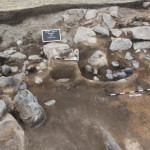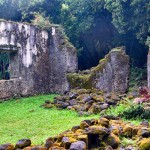Aztec Drunken Pulque God Found in Tlaxcala Mexico
A team or researchers who have been working on a site in Mexico for almost 25 years has discovered a “Drunken God” stone statue.
The Zultépec-Tecoaque archaeological site in Tlaxcala, home the ancient people called Acolhua, a sister tribe to the Aztecs worshiped many gods. Although the rare “Drunken God” Pulque had neer been seen in the region, until now.
Pulque is also an alcoholic beverage made from the fermented sap of the maguey (agave) plant.
It is traditional to central Mexico, where it has been produced for millennia. It has the color of milk, somewhat viscous consistency and a sour yeast-like taste. The drink’s history extends far back into theMesoamerican period, when it was considered sacred, and its use was limited to certain classes of people.
After the Spanish Conquest of Mexico, the drink became secular and its consumption rose. The consumption of pulque reached its peak in the late 19th century. In the 20th century, the drink fell into decline, mostly because of competition from beer, which became more prevalent with the arrival of European immigrants. There are some efforts to revive the drink’s popularity through tourism.
It is not known who invented pulque; its origins go back at least 1,000 years. Various stories and myths have developed as to its origins. Most involve Mayahuel, the goddess of the maguey. It was thought that the aguamiel collecting in the center of the plant was her blood.
Other deities, such as the Centzon Totochtin (400 rabbits) are associated with it, by representing the drink’s effects, and are the children of Mayahuel. Another version involving Mayahuel has her as a mortal woman who discovered how to collect aguamiel but someone named Pantecatl [panˈtekat͡ɬ] discovered how to make pulque.
Another story states that pulque was discovered by the Tlacuache (opossum), who used his human-like hands to dig into the maguey and extract the naturally fermenting juice. He became the first drunk. Tlacuache was thought to set the course of rivers. The rivers he set were generally straight except when he was drunk. Then they follow Tlacuache’s meandering path from cantina to cantina.
Another story traces the discovery of aguamiel to the Toltec Empire, when a noble named Papantzin was trying to get the emperor to marry his daughter Xochitl. He sent her to the capital with an offering of aguamiel, honey of the agave plant. The emperor and princess wed, and their son was named Meconetzin (maguey son). In other versions of the story, Xochitl is credited with discovering pulque.






